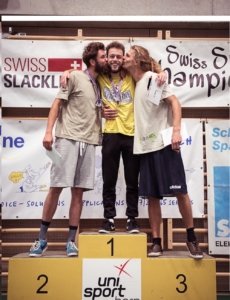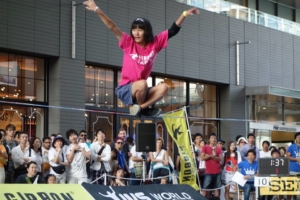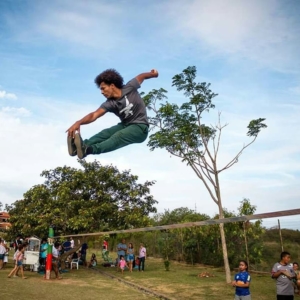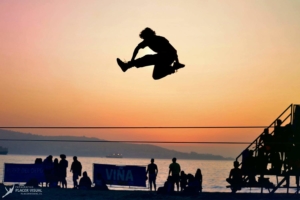

Why create a Slackline World Ranking List?
The International Slackline Association recognizes and supports numerous facets of slackline practice. Education, artistry, performance and of course the lifestyle itself – that is, the Slacklife – are integral parts of the unique world that revolves around the seemingly simple act of balancing on webbing.
Each of these dimensions of slackline are part of the same global movement. Therefore, it is our aim to embrace and nurture each and every one of them. This goal has recently led us to create an international ranking list for slackline athletes.
The creation of this ranking list comes as a result of years of rapid growth in the sport side of slacklining. Although we initially felt quite resistant to formalizing the sport aspect in this way, after conducting demographic surveys and communicating with tons of contest organizers and athletes
– this is what we realized:
- The results of our worldwide demographic survey show that a majority of slackliners would like slacklining to be recognized as an official sport, either globally, or in their country of residence. Furthermore, by researching the histories of other sports, we’ve learned that once a sport becomes officially recognized by a governing entity, athletes and organizers can enjoy significant access to funding, for projects, public events, competitions and more. At this stage, our surveys indicate that the ranking list could benefit up to 300 slackline athletes worldwide, about 70% of which are currently trickliners.
- The ranking list and the official recognition it brings will benefit more than just the athletes who rank on it. This development will also support slackline communities as a whole by empowering event and contest organizers, including the slackers in our member federations, associations and clubs. We believe that the ranking list will make it easier for community organizers to receive sports funding and other sponsorship for slackline events, performances and competitions, which should help whole communities accomplish beautiful things.
- Recognizing slacklining as an official sport also helps to reduce access issues and other conflict with government agencies or land management stakeholders. By helping to legitimize the practice of slacklining through its sport and performance facets, the ISA hopes to validate all aspects of slacklining in the eyes of land management agencies, landowners, insurance providers and other members of the public. In this way, we believe that the ranking list is a step towards creating a sustainable future for slacklining worldwide.
- The past has shown that if slackliners don’t do this, someone else will. It has happened in other sports – once the recognition and profitability of the discipline grows, a business entity or another outside group steps in and forms an organization to shape the sport in a way that maximizes profit and does not necessarily benefit the athletes (see for example what occurred in the freerunning/parkour world). By proactively creating a Sports Commission and a ranking list from within the slackline community, we are ensuring that the future of slackline is protected from third-party interests.





